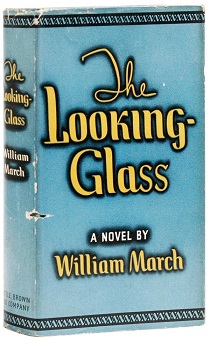 First edition | |
| Author | William March |
|---|---|
| Language | English |
| Genre | Novel |
| Publisher | Little, Brown & Company (USA) & Victor Gollancz Limited (UK) |
Publication date | January 1943 (USA) & June 1944 (UK) |
| Publication place | United States |
| Media type | Print (hardback & paperback) |
| Pages | 319 pp |
| ISBN | 9780817358129 |
| Preceded by | The Tallons |
| Followed by | October Island |
The Looking-Glass is a 1943 novel by William March. A continuation of his "Pearl County" series of novels and short stories, it is considered by many to be his greatest work. Originally titled Kneel to the Prettiest. The first two novels in the series are Come in at the Door and The Tallons .